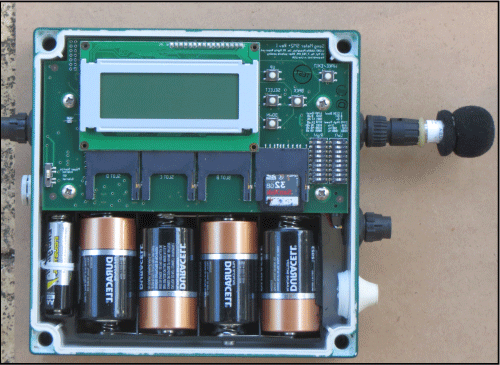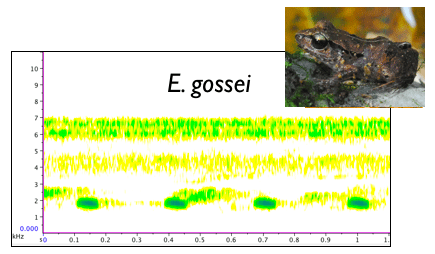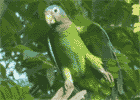
The Catadupa Key Biodiversity Area (KBA) was delineated to protect species threatened with extinction. One important group of animals which triggered the designation was Jamaica's endemic frogs: Catadupa is important both in providing habitat and maintaining a corridor which connects frog populations from central through western Jamaica for a minimum of 10 of the island's 21 endemic frog species.
The KBA designation was supported in large part due to field surveys conducted in 1961, 1967, 1969, and 1970 (Schwartz and Fowler 1973).
We know, of course, that a lot can happen in more than four decades - habitat can be obliterated, species can go extinct . . . or forest can mature and improve when destructive human activities cease.
So in 2013-2014, with the support of the Critical Ecosystem Partnership Fund, Windsor Research Centre conducted new field surveys to assess the current distribution and health of frog populations in the Catadupa KBA.
Study sites were established to survey the gradient of habitats (e.g., closed broadleaf forest found inside Forest Reserves, disturbed broadleaf forest both inside and outside Forest Reserves, areas of regenerating forest following abandonment of agriculture or small community settlements, etc.). We also were cognizant that the current structure of the forests was heavily influenced by the historic construction and operation of the railway which connected Montego Bay to Kingston via Ipswich in southern Catadupa: extraction of large, hardwood tree species for sleeper ties had an enormous effect on tree species composition and forest physiognomy, particularly in the south, but we weren't sure to what extent that legacy might affect different frog species. Additionally, we made sure the sampling points spanned the rainfall gradient of Catadupa since rain, humidity, and patterns of drought cycles can affect frogs. And trust us, it ALWAYS rains in Niagara in central Catadupa!
FROG SURVEYS
Two methods were used to determine species presence, distributions, and health:
1. Passive Acoustic "Frog Loggers" - programmable electronic data loggers, which recorded all audible sounds detected by a microphone. Because each frog species has a unique call, once one builds-up a library of calls, it's possible to identify species by looking at sonograms and describe the acoustic characteristics of their calls. By analyzing the recordings for a standardized period of time (in our case, we started 15 minutes after sunset and analyzed the first 180 minutes of the night), we could also quantify calling rates. This allowed us to develop "health & vigor" indices for each species: it takes a lot of energy for male frogs to advertize and compete with other males to attract females, so the presence of vigorously-calling males may be one indicator of a higher quality, healthier environment.
 | "Frog Loggers" Wildlife Acoustics' Song Meter SM2+ with SMX-II weatherproof acoustic microphone |
| Jamaican Earspot Frog (Eleutherodactylus fuscus) |
Jamaican Forest Frog (Eleutherodactylus gossei) |
 |  |
Play Audio | Play Audio |
| Click here to watch video | |

